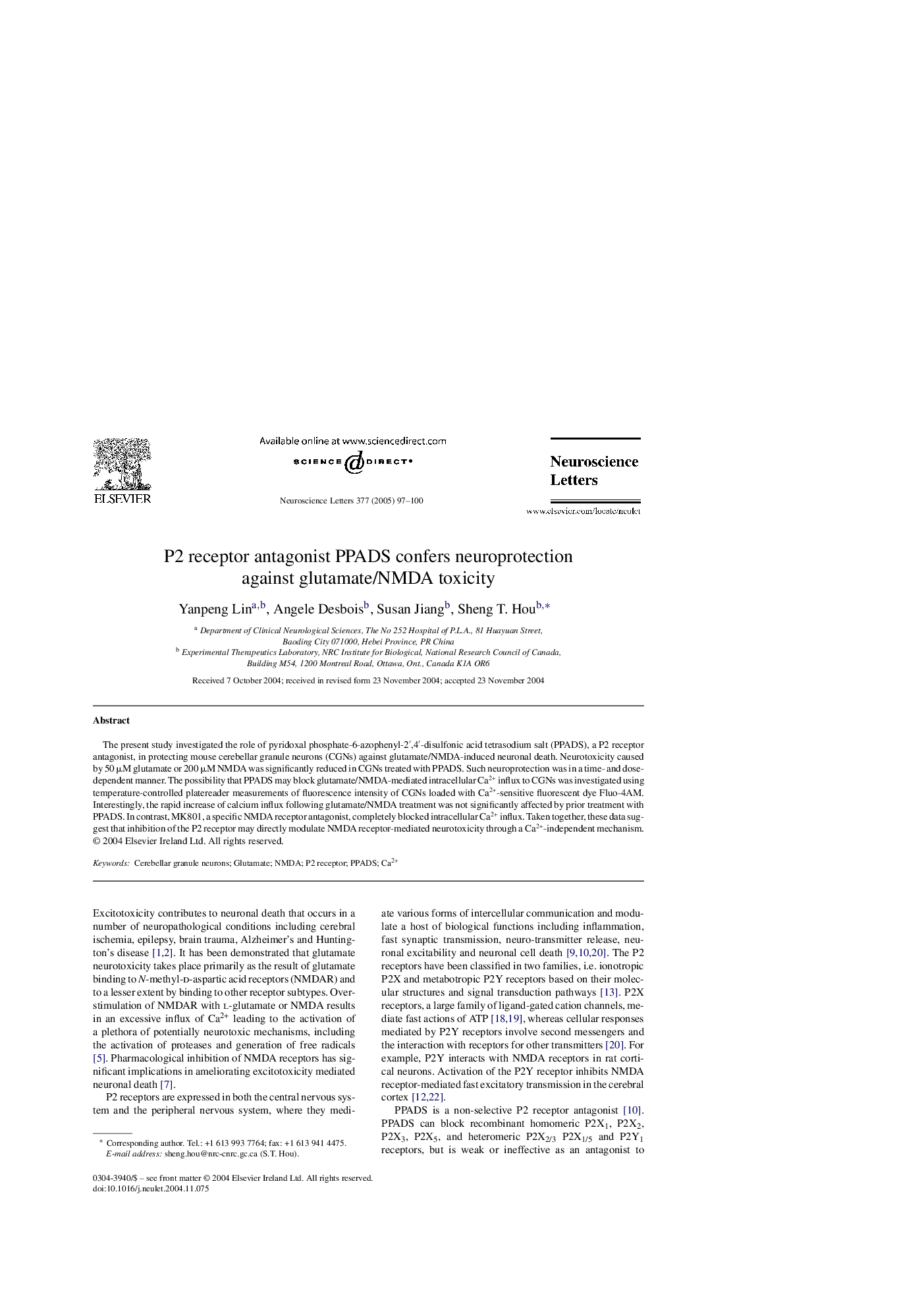| Article ID | Journal | Published Year | Pages | File Type |
|---|---|---|---|---|
| 9429636 | Neuroscience Letters | 2005 | 4 Pages |
Abstract
The present study investigated the role of pyridoxal phosphate-6-azophenyl-2â²,4â²-disulfonic acid tetrasodium salt (PPADS), a P2 receptor antagonist, in protecting mouse cerebellar granule neurons (CGNs) against glutamate/NMDA-induced neuronal death. Neurotoxicity caused by 50 μM glutamate or 200 μM NMDA was significantly reduced in CGNs treated with PPADS. Such neuroprotection was in a time- and dose-dependent manner. The possibility that PPADS may block glutamate/NMDA-mediated intracellular Ca2+ influx to CGNs was investigated using temperature-controlled platereader measurements of fluorescence intensity of CGNs loaded with Ca2+-sensitive fluorescent dye Fluo-4AM. Interestingly, the rapid increase of calcium influx following glutamate/NMDA treatment was not significantly affected by prior treatment with PPADS. In contrast, MK801, a specific NMDA receptor antagonist, completely blocked intracellular Ca2+ influx. Taken together, these data suggest that inhibition of the P2 receptor may directly modulate NMDA receptor-mediated neurotoxicity through a Ca2+-independent mechanism.
Related Topics
Life Sciences
Neuroscience
Neuroscience (General)
Authors
Yanpeng Lin, Angele Desbois, Susan Jiang, Sheng T. Hou,
